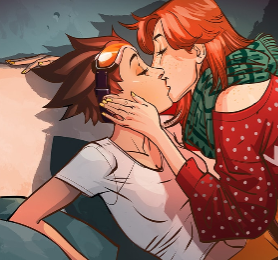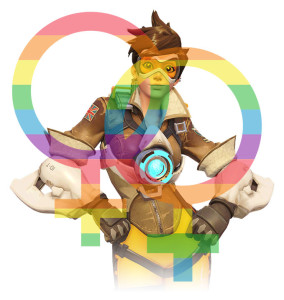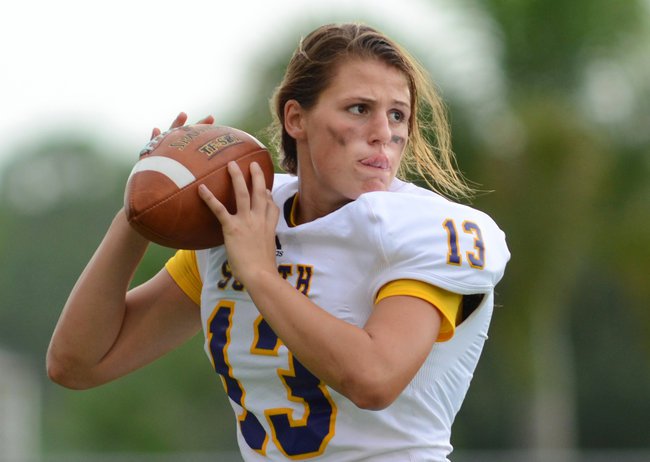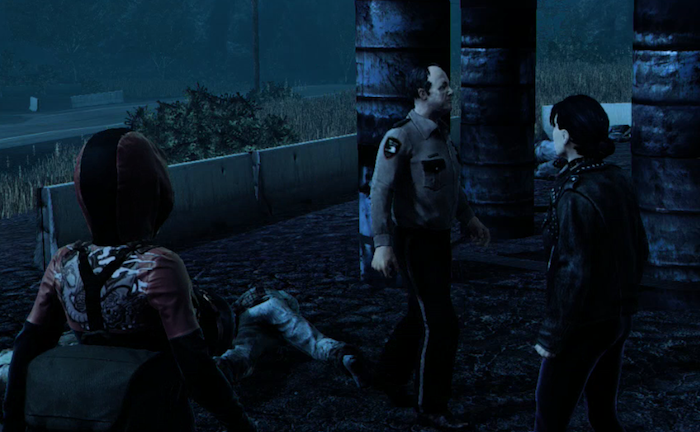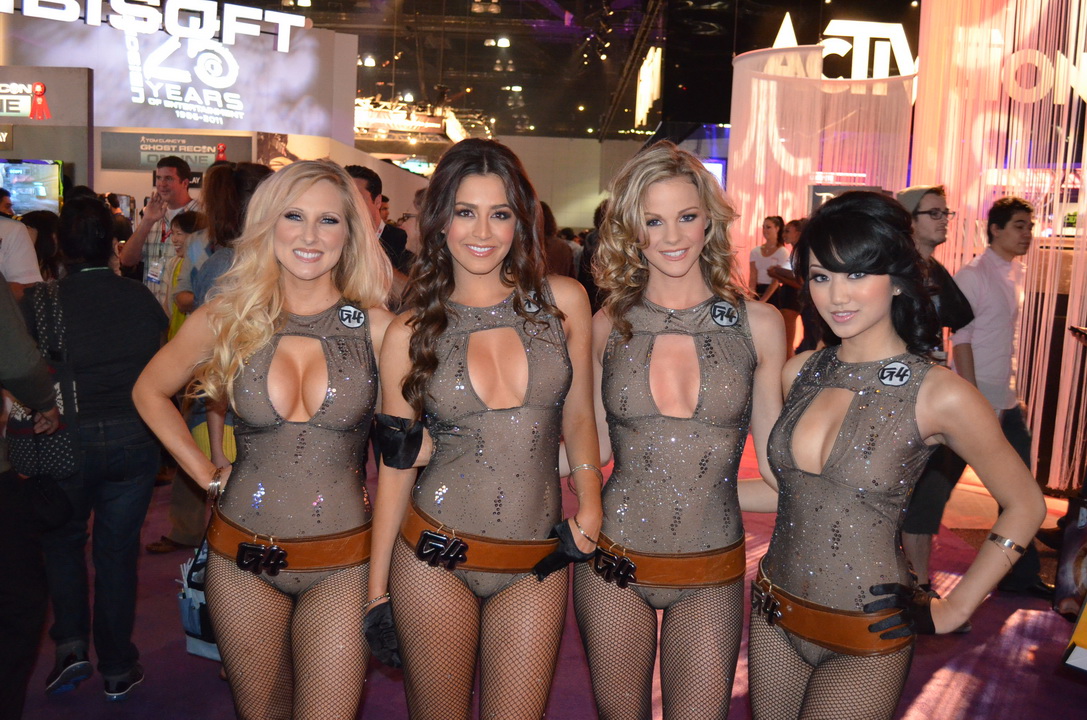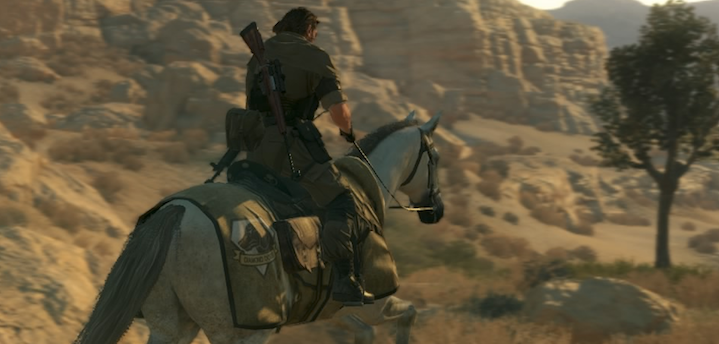When I wrote my first post for Not Your Mama’s Gamer three months ago, I didn’t anticipate writing a follow-up about Blizzard and representation so soon. I admit, my cynical expectation would have been that if I were writing a follow-up, it would be my continued criticism of their abysmal track record. Imagine my surprise when I opened my various internet feeds on December 20th to discover that Blizzard’s latest content release for Overwatch, a comic called Reflections, would change that record.
The comic featured poster-character Tracer embarking on a mad dash through London at Christmas to get home in time to be with her family. Not a surprising choice of topic during the holiday season, but the thing that had fans all over the internet suddenly screeching at each other was the panel that featured Lena ‘Tracer’ Oxton coming home to, and sharing a kiss with, her girlfriend, Emily, making her the first canonically queer character to be revealed in Overwatch lore.
In my previous post I talked about the importance of non-game content to the Overwatch universe, the fan experience, and the desires expressed throughout the fandom for explicitly queer characters. I called this Schrodinger’s representation, where the presence of queer characters ended up existing in a kind of limbo, implicit but not explicit. Having the explicit representation matters, and nothing made this more clear than the fan reaction to Tracer having a girlfriend. Users on social media expressed their joy, playing off of Tracer’s voice line in the game ‘cheers love, the cavalry’s here!’ to express their delight (And give me a thematic post title).
Tracer’s sexuality is significant not just because of a general call for representation in Overwatch and videogames as a whole, but because of her placement in Blizzard’s marketing strategy. As one of the characters with the most longevity and recognizability, having their poster-hero be openly and canonically queer is a big move and bigger statement for the company to make. Representation is easy for many companies to brush aside and relegate to side-characters, having queer characters or characters of color in minor and background roles as a check mark in their box to appease a small but vocal subset of the fandom that wants more diversity in their media. For Blizzard to announce that their most prominent and recognizable character is also their first canonically queer character is significant, indicating a commitment to representation beyond tokenism and soft appeasement.
For queer Overwatch fans, Blizzard’s announcement meant Christmas came early. After months of dropped hints and subtle implications, having a definitive instance of queer representation gave many fans immense satisfaction, myself included. It’s been a week since the release of Reflection at the time of writing this post, and so I find myself asking the question I’m sure is also on the minds of other queer fans of Overwatch, and of video games as a whole: what’s next?
It would be nice to take the Tracer news as a definitive victory and see it as a sign to breathe easy, to take a break in the endless quest queer fans are on to see themselves and others in their community represented in games and culture. The thing to remember, and that always gives me pause, is knowing that one instance of a queer character in a game is far from enough to solve the problem of minimal representation in popular culture, and while it’s something to celebrate, it is also a reminder to keep fighting.
Representation and inclusion has a tricky aspect to it in that sometimes the inclusion of diverse characters does not always include diverse portrayal. Tropes related to minority characters such as the black character being the first to die and the queer relationships being doomed to bloody failure have been present in popular culture for centuries, indicating to those groups that their presence in the white mainstream media is hopeless, anomalous, and unsustainable. Other recent media such as TV’s The 100 came under fire for including an openly bisexual female character in a queer relationship as their lead, only to have the love interest die before the end of the third season. It’s hardly the first show to do so, one of the more notable pop culture instances of this trope being Willow and Tara in Buffy the Vampire Slayer. We jump for joy at the promise and the presence of queer representation in our media, but that exuberance is tempered with caution, and as I cheered with glee at the sight of Tracer kissing her girlfriend, I also felt anxiety and dread. I’ve been burned before by attempts at representation in mainstream media.
Seeing Tara die in Buffy the Vampire Slayer broke my heart as a young teen, still figuring out my gender and my sexuality, because that showed me that being gay meant having a target on your back, meant preparing for a life of suffering punctuated by fleeting moments of happiness. Going against the norm was dangerous, and as I grew up to embrace my queerness, it was in spite of seeing the characters I could relate to being hurt, killed off, and denied actual happiness. The role models I had were few and far between, the characters I could relate to so often ending their stories in graves. When I stopped watching The 100 it wasn’t because seeing Lexa take a bullet for Clarke was painful, it was because I was angry. I was angry and hurt and tired of seeing the characters I cared about never finding happiness they could have had if they had just been more heterosexual.
Media is getting better. I can say that easily, knowing that other shows manage to have queer characters who find love and happiness, that some video games allow for more and more romance options of varying genders. The real thing is that it isn’t enough, and it won’t be enough until I’m no longer surprised to see a queer character in a franchise. I’m overjoyed that Tracer is visibly and happily queer, but the fact that I’m overjoyed says that we have not yet normalized diversity or inclusion, in games or any kind of cultural text. I’m afraid that now that Tracer’s love interest has been revealed, another comic will show Emily’s tragic death. My past experience gives this love an unwanted expiration date, and the fact that I feel this and fear this says it all: the future of LGBT representation is still uncertain, our fight now more necessary than ever. Blizzard has promised us that more than one Overwatch hero will be revealed as members of the LGBT spectrum, so the promise of avoiding a token scrap from the company seems possible.
I feel cynical and jaded for being so tentative in my excitement, for holding my breath as I cheer at the sight of Tracer and Emily together, but I’ve been burned before. It’s why the queer community celebrates when we see not just a queer character, but a happy one in a loving and committed relationship who stands out as the most recognizable character in a franchise. We’re overjoyed that Blizzard is listening to what the fans want and need from the Overwatch series. We just hope that they will continue to do so.

